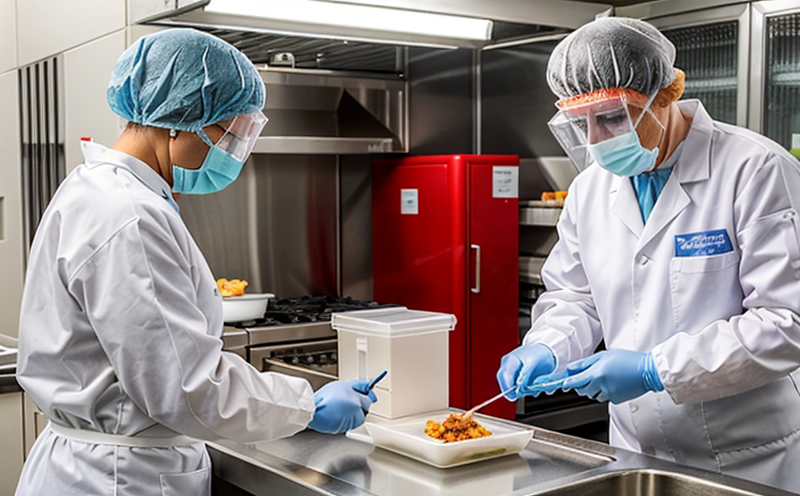ISO 20838 Molecular Detection of Norovirus Genogroup II in Food
The ISO 20838 molecular detection method is a critical tool for identifying and quantifying noroviruses, specifically genogroup II (GI), which are responsible for a significant portion of foodborne illnesses worldwide. These viruses are particularly challenging to detect due to their small size, high variability, and potential to contaminate food products during processing or handling.
The test is designed to be sensitive enough to detect even trace amounts of norovirus RNA in various matrices such as raw vegetables, fruits, dairy products, and ready-to-eat meals. This method leverages reverse transcription polymerase chain reaction (RT-PCR) technology to amplify specific regions of the viral genome. The process involves several key steps: sample collection, nucleic acid extraction, amplification using RT-qPCR, and final detection.
Sample preparation is crucial for accurate results. Samples are typically homogenized in a buffer solution containing proteases to degrade any inhibitors that could interfere with the PCR process. After extraction, the RNA is reverse transcribed into complementary DNA (cDNA), which serves as the template for amplification reactions.
The assay targets specific sequences within the norovirus genome, ensuring high specificity and selectivity. This approach minimizes cross-reactions with other pathogens or contaminants, enhancing both sensitivity and reliability of the test. The detection limit is typically set at 10 copies/mL, allowing for precise quantification even in low-concentration samples.
The use of this method is essential not only for food safety but also for compliance with international standards such as ISO 26574-3:2019 and EU regulations on microbiological criteria for foodstuffs. Compliance officers and quality managers can rely on this test to ensure their products meet stringent health and safety requirements.
In addition, the method is particularly valuable in research settings where understanding viral load dynamics during food production processes or investigating outbreaks of norovirus-related illnesses is necessary. R&D engineers benefit from this technology as it provides insights into potential contamination points along the supply chain, guiding improvements in hygiene practices and processing methods.
The ISO 20838 molecular detection method plays a pivotal role in maintaining public health by preventing the spread of norovirus through food consumption. By providing reliable data on viral presence and concentration, it supports informed decision-making processes across all levels of the food industry—from manufacturers to retailers and consumers.
| Application Area | Description |
|---|---|
| Food Manufacturing | Detecting norovirus in raw materials and finished products to ensure compliance with safety standards. |
| Supply Chain Management | Monitoring for contamination at various stages of the supply chain, from farm to table. |
| Retail and Catering Services | Screening products before distribution or sale to protect consumer health. |
| Outbreak Investigation | Investigating sources of norovirus outbreaks linked to contaminated food items. |
| Research and Development | Studying viral behavior in different food matrices under various conditions. |





